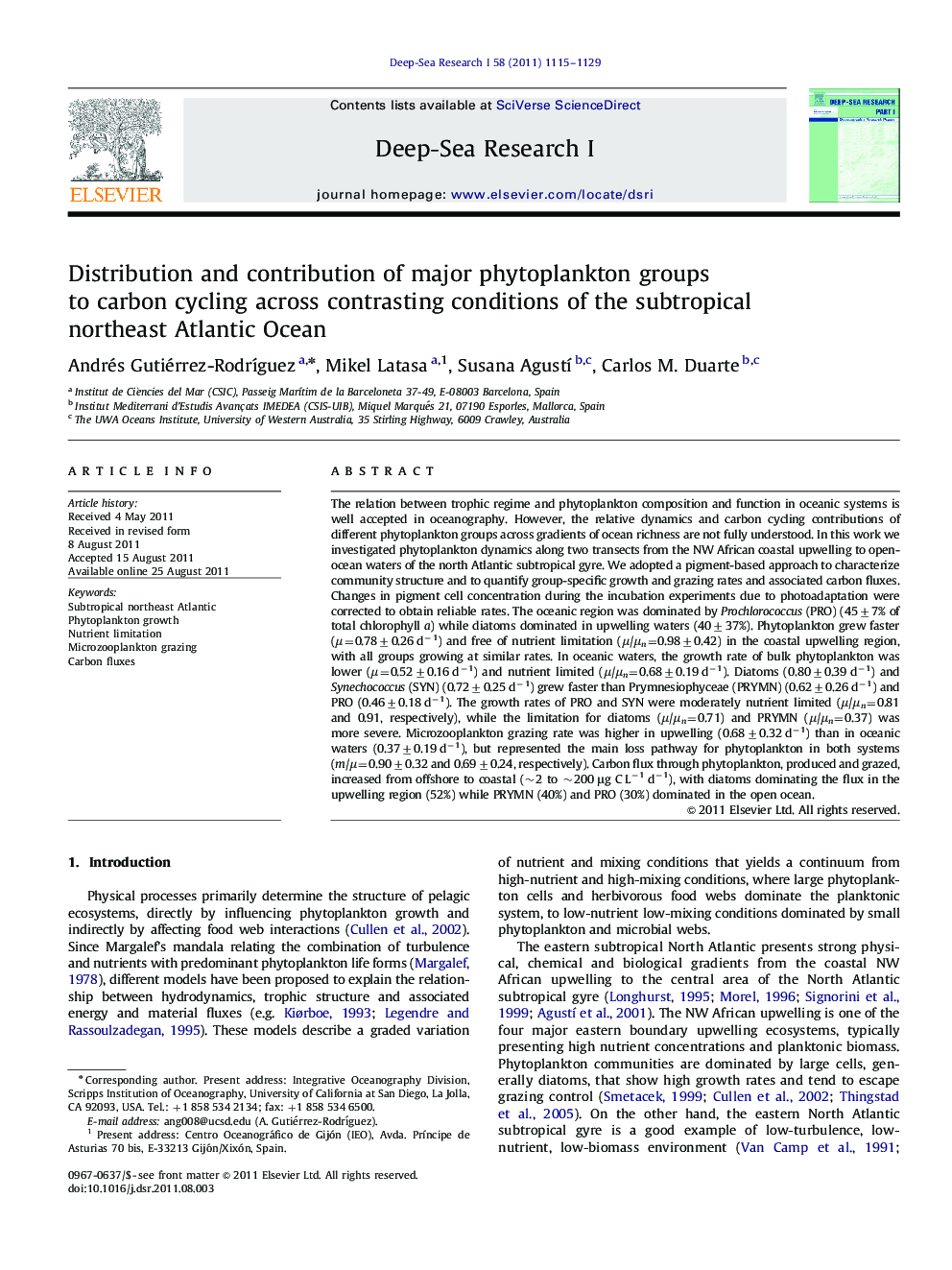| Article ID | Journal | Published Year | Pages | File Type |
|---|---|---|---|---|
| 4534831 | Deep Sea Research Part I: Oceanographic Research Papers | 2011 | 15 Pages |
The relation between trophic regime and phytoplankton composition and function in oceanic systems is well accepted in oceanography. However, the relative dynamics and carbon cycling contributions of different phytoplankton groups across gradients of ocean richness are not fully understood. In this work we investigated phytoplankton dynamics along two transects from the NW African coastal upwelling to open-ocean waters of the north Atlantic subtropical gyre. We adopted a pigment-based approach to characterize community structure and to quantify group-specific growth and grazing rates and associated carbon fluxes. Changes in pigment cell concentration during the incubation experiments due to photoadaptation were corrected to obtain reliable rates. The oceanic region was dominated by Prochlorococcus (PRO) (45±7% of total chlorophyll a) while diatoms dominated in upwelling waters (40±37%). Phytoplankton grew faster (μ=0.78±0.26 d−1) and free of nutrient limitation (μ/μn=0.98±0.42) in the coastal upwelling region, with all groups growing at similar rates. In oceanic waters, the growth rate of bulk phytoplankton was lower (μ=0.52±0.16 d−1) and nutrient limited (μ/μn=0.68±0.19 d−1). Diatoms (0.80±0.39 d−1) and Synechococcus (SYN) (0.72±0.25 d−1) grew faster than Prymnesiophyceae (PRYMN) (0.62±0.26 d−1) and PRO (0.46±0.18 d−1). The growth rates of PRO and SYN were moderately nutrient limited (μ/μn=0.81 and 0.91, respectively), while the limitation for diatoms (μ/μn=0.71) and PRYMN (μ/μn=0.37) was more severe. Microzooplankton grazing rate was higher in upwelling (0.68±0.32 d−1) than in oceanic waters (0.37±0.19 d−1), but represented the main loss pathway for phytoplankton in both systems (m/μ=0.90±0.32 and 0.69±0.24, respectively). Carbon flux through phytoplankton, produced and grazed, increased from offshore to coastal (∼2 to ∼200 μg C L−1 d−1), with diatoms dominating the flux in the upwelling region (52%) while PRYMN (40%) and PRO (30%) dominated in the open ocean.
► Phytoplankton composition and dynamics in the subtropical northeast Atlantic were investigated. ► Diatoms dominated phytoplankton biomass and carbon fluxes in the upwelling. ► Prochlorococcus and Prymnesiophyceae dominated in oligotrophic waters. ► Phytoplankton grew faster and free of nutrient limitation in coastal upwelling conditions. ► Grazing represented the major loss term for phytoplankton in upwelling and oligotrophic waters.
